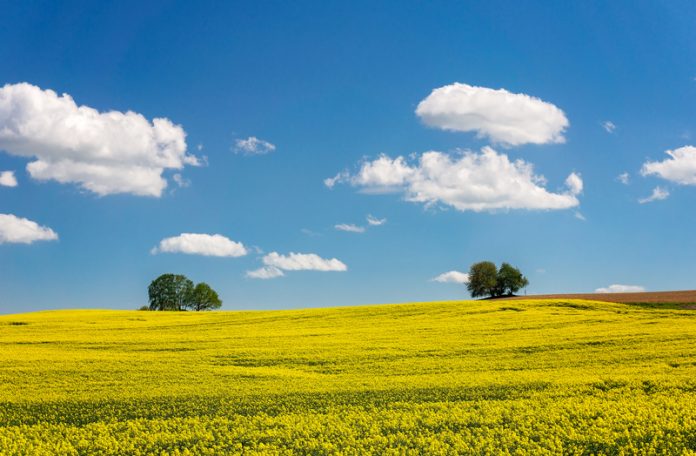Federal Minister of Food and Agriculture, Christian Schmidt, outlines how the Green Paper process is helping to build bridges between farmers and consumers
Healthy food and nutrition is a very immediate and personal part of our lives, and it is our agricultural sector that lays the foundation for this.
Our agricultural, horticultural, viticultural and forestry sectors also shape our homeland and landscapes. Since time immemorial, three aspects food agriculture and homeland have been inextricably linked. However, our post-industrial, globalised societies, which rely heavily on the division of labour, have led to many people losing sight of this natural connection.
Whereas fifty years ago, most people had farmers in their families or among their friends, many consumers today have lost all personal links with farming. This is also the reason why farmers and the food they produce no longer enjoy the appreciation they deserve. Whereas in the past, and well into the 20th century, the main issue was whether enough food could be produced for everyone, contemporary social and political debate now sometimes even questions whether we need a productive agricultural sector at all. This attitude often goes hand in hand with pronounced criticism of globalisation. The aim of using our agricultural production in Europe, a region that boasts excellent land for agriculture, to help feed the world is often fundamentally contested. Some even suggest that agriculture should focus only on protecting nature and conserving biodiversity.
This idea adopts a one-sided, idealistic view, dispensing with the connection between life, economic activity and conservation which is the basis of the concept of sustainability. Although such ideas are not by any means representative of how the majority view the farming sector today, they do cause great uncertainty among people working in the farming, forestry and food sectors.
In an open society, and in light of the current challenges we face from a growing world population, climate change and changing values, it is natural and necessary to discuss and question how things have been done in the past. Some sections of the population focus intensively on their diet and food. They consider diet and food to be a lifestyle issue, and indeed often an issue of identity. Our farmers’ work is regarded sceptically by many members of the public and, increasingly, it is being questioned whether “grow or go” can really be the solution for all regions. To stabilise support for their profession, our farmers face the challenge of meeting society’s new and different expectations of farming. We discuss the ways and means of how we eat, how we treat our animals, how we manage water, air and soil, and how we can make our homeland an attractive place to live.
Green Paper process
At my initiative, representatives from agriculture, civil society, the church, industry, academia, research and politics have joined together with the objective of talking with each other rather than about each other. We have listened to each other in an open, fair and equal dialogue. The discussions were sometimes very heated, involving as they did some diametrically opposed standpoints. We have jointly identified challenges which we must face. We have developed ideas from which we are deriving viable solutions. My political work is guided by the concepts of personal accountability, self-determination and voluntary commitment rather than patronage by the state and statutory regulation. I called this dialogue the Green Paper process, as the Green Paper on Food, Nutrition, Agriculture and Rural Areas offers direction and is a guiding vision for our policy delivery. This process is helping us to build bridges between farmers and consumers.
The Green Paper maps out paths to potential solutions; we intend to cooperate with all stakeholders and strike out along these paths. We intend in this way to anchor the food and agricultural sectors where they belong: at the centre of society – with secure prospects for the future.
In order to provide good prospects for the future, we need to know in what direction we want to develop the European Union’s Common Agricultural Policy (CAP) after 2020. We will continue to need a strong and financially well-equipped CAP that should be based on two solid pillars. The EU agricultural budget must not be used as a quarry to stop up financing gaps in other EU policy areas after Brexit. The cost of Brexit must not be borne by agriculture and rural areas. We must at any rate use CAP funds in a more targeted manner. Direct payments should support family farms and livestock farms that are particularly affected by society’s demands regarding animal husbandry. We must focus support more on active farmers with strong roots in the regions and not on non-agricultural investors whose main occupation is the production of spectacles or furniture.
The Green Paper also identifies prospects for rural regions. Our aim is for our rural areas to be workshops for the future and to provide ideas for the development of our society. We will gear the support instruments more closely to address demographic change and support weaker economic areas. This includes ensuring good medical care throughout the country, optimising mobility structures, strengthening local amenities, and also promoting voluntary work. Creating equivalent living conditions is a guiding principle of our political engagement for rural areas.
We aim to enable people to have safe and healthy food, to increase people’s appreciation of food, to create the framework for an economically viable agricultural sector with strong regional roots, to improve animal welfare, to ensure sustainability and to establish rural areas as workshops of the future. The Green Paper is our road map to achieve these aims.
Christian Schmidt
Federal Minister of Food and Agriculture
Federal Ministry of Food and Agriculture











